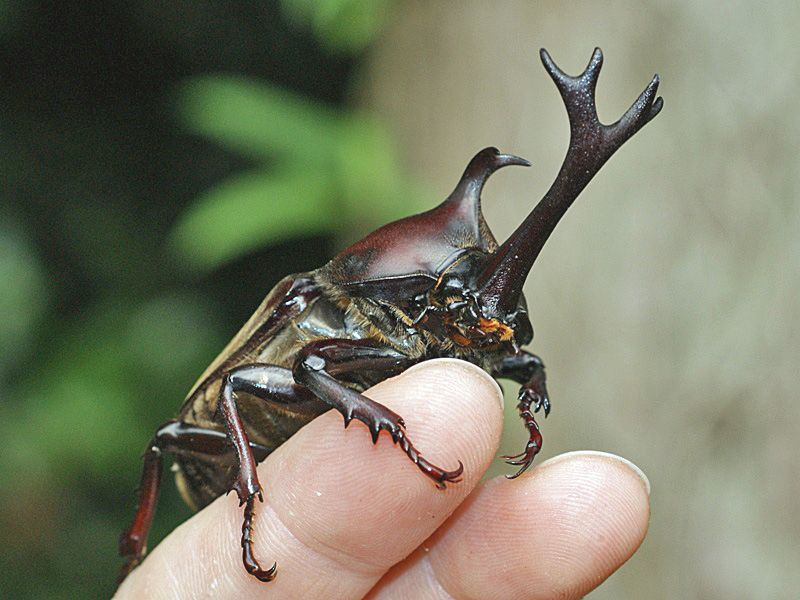
rhinoceros attacks the developing fronds of raffia, 4 coconut, oil, and other palms in tropical Asia and a number of Pacific islands. The hercules beetle is a type of rhinoceros beetle, which is a a type of scarab beetle also. The Asiatic rhinoceros beetle, coconut rhinoceros beetle or coconut palm rhinoceros beetle, 2 3 ( Oryctes rhinoceros) is a species of rhinoceros beetle of the family Scarabaeidae. This is what a hercules beetle larva grows into, although the larva in the photos I think grow into a smaller species than the one in the video. That would make them friends to the jungle Rhinoceros Beetle Larvae Video Perhaps these larvae are eating those dead roots, helping to process this material into soil, and creating space underground so that more bananas can grow. Bananas trees grow in groups, with each large stalk giving a single bunch of bananas, then dying, leaving roots underground that have spread out to form new plants. The body is C-shaped, has three pairs of segmented legs, and is grayish posteriorly. I suspect that these beetles are actually helping us. Oryctes rhinoceros larvae (grubs) are milky white with red heads. I’ve learned that in the Costa Rica jungles, one must not judge a book by its cover, and that everything has its place here. LARVAE: Japanese Rhino Beetle (Trypoxylus dichotoma) Regular price 34.00 Regular price Sale price 34.00 Unit price / per. Various sources describe them as eating “rotting wood and roots”. I was unable to determine, searching on the internet, whether they were eating our banana roots or not. Quickly I was able to discover that they were… rhinoceros beetle larvae, a.k.a.

Then I remembered that many years ago, my friend Michael, a conservationist who used to live in Montezuma, had told me about the huge transparent grubs we might find underground, which were larva of some type of beetle. The University of Hawaii Coconut Rhinoceros Beetle Response team uses dogs to sniff out larvae in host sites, such as compost piles and mulch.
RHINOCEROS BEETLE LARVAE PLUS
I tried searches such as “large transparent underground insects” but was only coming up with photos of cicadas and dragonflies with their transparent wings, plus the usual assortment of unrelated junk that Google Image Search delivers. A Google Image Search didn’t turn up anything useful. No one knew what they were, but our workers were convinced that they were destroying our banana plant roots (although the plants seem healthy enough) and they said they were killing these pests.īut were they really the enemies of our bananas? I took these photos and video to help identify what they were. They are about the length and thickness of a man’s thumb. Rhinoceros beetle antennae consist of 9-10 segments, usually with the last 3 segments forming a small club. Rhinoceros beetles are related to stag beetles, but are much smaller. The species is black, sometimes with a blue-green sheen. They look thoroughly vile, and with their large sharp mandibles, they seem to be able to deliver a painful bite. Females have a less prominent small bump.

The translucent creamy white grubs feed on the. From each egg a single larva (grub) will emerge. We discovered these large, transparent grubs living in the earth near the roots of our bananas. Eggs are small and white and take around 3 4 weeks to hatch. Decrease Font Size Increase Font Size Text Size Print This Page Send by Emailįriendly Transparent Underground Monsters


 0 kommentar(er)
0 kommentar(er)
